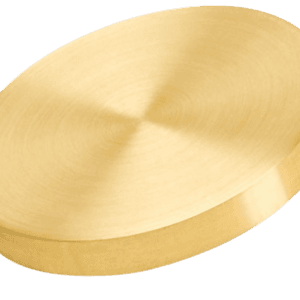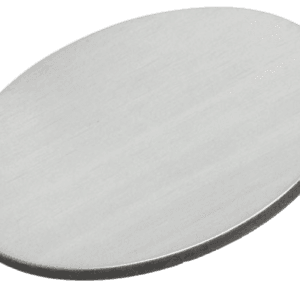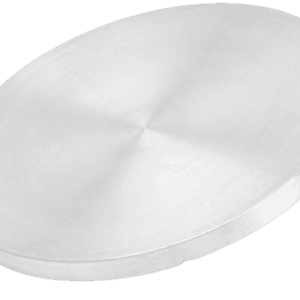Copper Aluminum Sputtering Target
Introduction
The Copper Aluminum Sputtering Target is a widely used alloy material designed for thin film deposition in semiconductor, optical, and decorative coating industries. By combining the high conductivity of copper with the lightweight, corrosion-resistant properties of aluminum, this sputtering target delivers excellent balance between electrical, thermal, and mechanical performance, making it suitable for diverse PVD applications.
Detailed Description
Copper Aluminum sputtering targets are typically manufactured using high-purity raw materials under advanced melting and powder metallurgy processes, followed by hot pressing or vacuum melting to ensure density and uniformity.
Composition: Alloy ratios can be tailored, with common formulations such as Cu:Al = 90:10 (wt%) or other custom compositions depending on application.
Purity: High-purity alloy (≥99.9%) ensures reduced contamination and stable thin film performance.
Microstructure: Fine-grained, dense targets support uniform sputtering rates and improved thin film adhesion.
Dimensions: Available in disc, rectangular, and custom shapes with diameters from 25 mm to 300 mm and thicknesses of 3–6 mm.
Bonding Options: Indium, elastomer, or high-conductivity backing plates (copper/titanium) are available for efficient heat transfer and longer target life.
Applications
Copper Aluminum Sputtering Targets are utilized across industries:
Semiconductors & Electronics – Interconnect layers, contact coatings, conductive films.
Optical Coatings – Reflective and anti-reflective coatings in lenses and displays.
Energy Devices – Thin films for solar cells and advanced energy storage systems.
Decorative Coatings – Durable, aesthetically appealing coatings in consumer products.
R&D – Thin film studies in universities, labs, and high-tech companies.
Technical Parameters
| Parameter | Typical Value / Range | Importance |
|---|---|---|
| Purity | ≥ 99.9% | Ensures stable film quality and reduced defects |
| Diameter | 25 – 300 mm (custom) | Compatible with most sputtering systems |
| Thickness | 3 – 6 mm | Influences deposition efficiency |
| Bonding | Copper / Titanium backing | Improves heat conduction & mechanical stability |
| Alloy Ratio (Cu:Al) | 90:10 or custom | Tailored to optimize electrical/thermal properties |
Comparison with Related Materials
| Material | Key Advantage | Typical Application |
|---|---|---|
| Copper Aluminum Alloy Target | Good balance of conductivity & strength | Semiconductor, optical coatings |
| Pure Copper Target | Excellent conductivity, low resistivity | Microelectronics, wiring films |
| Pure Aluminum Target | Lightweight, corrosion resistance | Optical & decorative coatings |
FAQ
| Question | Answer |
|---|---|
| Can the Cu:Al ratio be customized? | Yes, alloy composition can be tailored to meet specific requirements. |
| What is the standard lead time? | Typically 2–3 weeks depending on size and customization. |
| Is backing plate bonding available? | Yes, indium or elastomer bonding with Cu/Ti plates is standard. |
| How is it packaged? | Vacuum-sealed and shipped in protective foam-lined export-safe cartons or crates. |
| Which industries use it most? | Semiconductor, optics, decorative coatings, and solar energy. |
Packaging
Every Copper Aluminum Sputtering Target is vacuum-sealed to prevent contamination, then packed with shock-absorbing foam in export-safe cartons or wooden crates. External labeling ensures clear identification and traceability throughout storage and transport.
Conclusion
Copper Aluminum Sputtering Targets combine conductivity, durability, and versatility, making them a preferred choice in thin film deposition across multiple industries. With customizable purity, size, bonding, and alloy ratios, they provide reliable solutions for both industrial-scale production and advanced research.
For detailed specifications and a quotation, please contact us at [sales@thinfilmmaterials.com]





Reviews
There are no reviews yet.